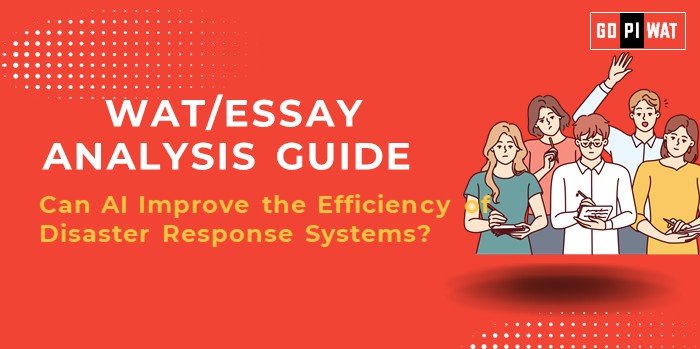📋 Written Ability Test (WAT)/Essay Analysis Guide: Can AI Improve the Efficiency of Disaster Response Systems?
🌐 Understanding the Topic’s Importance
AI’s role in disaster response highlights intersections between technology, governance, and humanitarian aid. It demonstrates how innovation can address global challenges.
📝 Effective Planning and Writing
- ⏱️ Time Allocation:
- Planning: 5 minutes
- Writing: 20 minutes
- Review: 5 minutes
- 📌 Preparation Tips: Research case studies, note down relevant stakeholders, and compile quick facts.
📖 Introduction Techniques for Essays
🎭 Contrast Approach:
“While disasters strike unpredictably, advanced AI algorithms now offer a beacon of hope, predicting calamities and coordinating efficient responses.”
🔧 Solution-Based:
“Harnessing AI in disaster response systems can drastically reduce loss of life and infrastructure damage, as evidenced in recent flood predictions in Bangladesh.”
📚 Structuring the Essay Body
🏆 Achievements:
- AI-driven drones, flood prediction tools, and real-time analytics are revolutionizing disaster responses globally.
⚠️ Challenges with Comparative Analysis:
- Algorithmic bias and unequal access to AI resources hinder its adoption in developing nations.
🔮 Future Outlook:
- Combining AI with blockchain and IoT can ensure transparency and efficiency.
📌 Concluding Effectively
⚖️ Balanced Conclusion:
“AI has proven its potential in saving lives during disasters, but addressing its challenges is vital for universal adoption.”
🌍 Global Perspective Conclusion:
“Learning from nations like Japan and the U.S., where AI adoption has been effective, can help bridge gaps and make disaster response more inclusive.”
💡 Recommendations for Sustainable Progress
- Strengthen Data Infrastructure: Invest in localized datasets.
- Public-Private Partnerships: Foster collaborations for cost sharing.
- Training Programs: Equip responders with AI tools and techniques.
📄 Sample Short Essays
⚖️ Balanced Perspective:
“AI is redefining disaster response with predictive tools and real-time analytics. However, its success depends on tackling issues like data bias and ensuring equitable access globally.”
🔧 Solution-Oriented:
“Integrating AI into disaster response systems has significantly improved response times and resource allocation, but partnerships and robust governance are needed to maximize its potential.”
🌍 Global Comparison:
“AI-powered disaster systems in Japan and the U.S. set a benchmark for other countries, demonstrating that investment in technology can lead to more resilient communities.”


